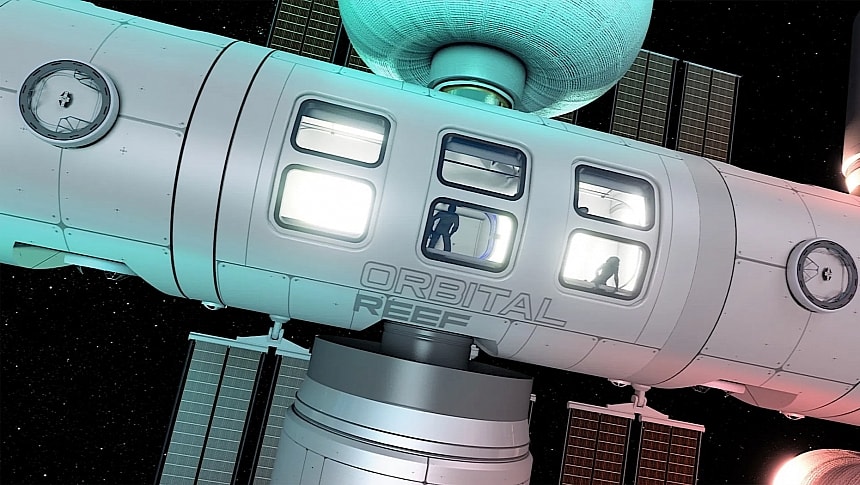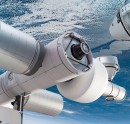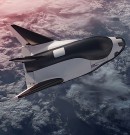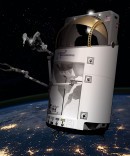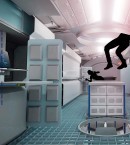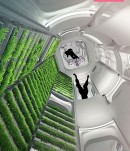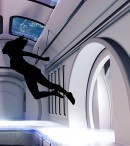For some of us humans the thought of living up there in space (or perhaps on another planet) is not just a thought, but a dream. A dream some of us might see come true soon enough, thanks to the many people and organizations working towards establishing otherworldly human outposts.
Many of those involved in this are dreaming of colonies on the Moon or Mars, but the reality is humans will likely colonize Earth's orbit before anything else. And there's no better reason to believe that than the number of space stations, including for civilians, currently being planned.
Our planet presently has two orbital habitats, the International Space Station (ISS) and the Chinese Tiangong. The ISS will crash back to Earth early next year, while the Tiangong will probably endure and will be joined by a series of private space stations.
One of them is called Orbital Reef, and it's being put together by Blue Origin and Sierra Space. NASA is partly funding the idea, and it was the space agency that gave us back in March an update on how the Orbital Reef is coming along.
But first, a few things about the station itself. To be planted at an altitude of 500 km (311 miles) from the surface of the planet, it will be capable of holding a total of ten humans in a habitat that provides 830 cubic meters (29,300 cubic feet) of space.
The place has been designed to be used for both science purposes and space tourism. It will be placed in orbit (hopefully) by the end of the decade to serve the needs of companies, space agencies, nations, media, and private individuals.
But habitation in such a hostile environment as space would not be possible without a proper life support system. And it's exactly this system NASA updated us on.
A life support system comprises all the technologies and processes that supply clean air and water to the astronauts. It often includes regenerative technologies to recycle and reuse whatever can be recycled and reused, helping scale down the need for supplies sent up in expensive missions from Earth.
The Orbital Reef will naturally have a support system on its own, and it just completed four testing milestones under the watchful eye of the American space agency. The procedures covered trace contaminant control, water contaminant oxidation, urine water recovery, and water tank storage.
NASA does not go into the details of each procedure and limits itself to saying that the "trace contaminant control test screened materials to remove harmful impurities from the air," while all the others focused on cleaning, reclaiming, and storing water.
We're also not told how everything went, but given how the agency stated that it "sees progress," it kind of comes as a green light for Blue Origin to keep going with its plans and for us to dream of a future when we'll look down on Earth from high up in orbit.
Our planet presently has two orbital habitats, the International Space Station (ISS) and the Chinese Tiangong. The ISS will crash back to Earth early next year, while the Tiangong will probably endure and will be joined by a series of private space stations.
One of them is called Orbital Reef, and it's being put together by Blue Origin and Sierra Space. NASA is partly funding the idea, and it was the space agency that gave us back in March an update on how the Orbital Reef is coming along.
But first, a few things about the station itself. To be planted at an altitude of 500 km (311 miles) from the surface of the planet, it will be capable of holding a total of ten humans in a habitat that provides 830 cubic meters (29,300 cubic feet) of space.
The place has been designed to be used for both science purposes and space tourism. It will be placed in orbit (hopefully) by the end of the decade to serve the needs of companies, space agencies, nations, media, and private individuals.
But habitation in such a hostile environment as space would not be possible without a proper life support system. And it's exactly this system NASA updated us on.
A life support system comprises all the technologies and processes that supply clean air and water to the astronauts. It often includes regenerative technologies to recycle and reuse whatever can be recycled and reused, helping scale down the need for supplies sent up in expensive missions from Earth.
The Orbital Reef will naturally have a support system on its own, and it just completed four testing milestones under the watchful eye of the American space agency. The procedures covered trace contaminant control, water contaminant oxidation, urine water recovery, and water tank storage.
NASA does not go into the details of each procedure and limits itself to saying that the "trace contaminant control test screened materials to remove harmful impurities from the air," while all the others focused on cleaning, reclaiming, and storing water.
We're also not told how everything went, but given how the agency stated that it "sees progress," it kind of comes as a green light for Blue Origin to keep going with its plans and for us to dream of a future when we'll look down on Earth from high up in orbit.
